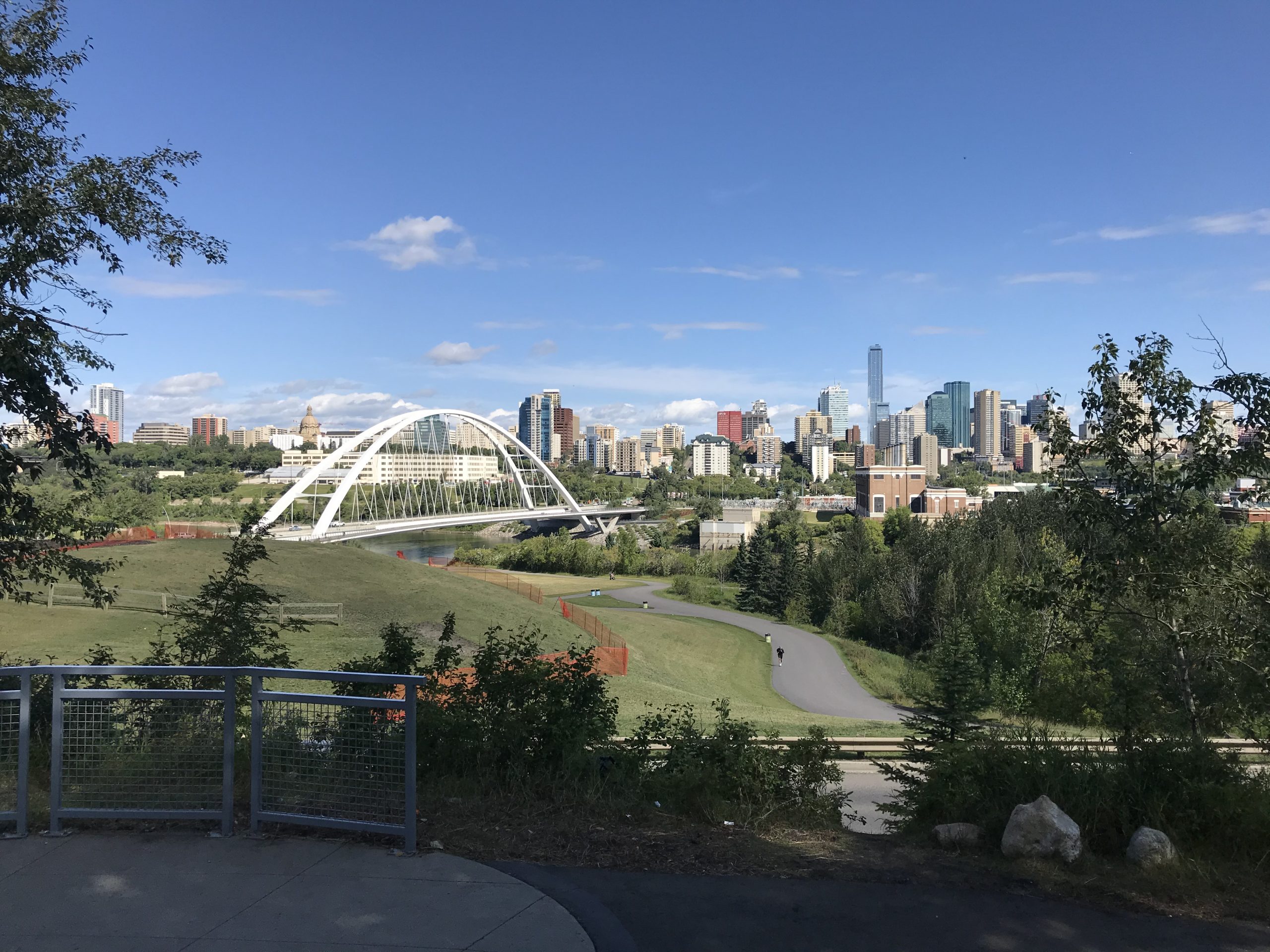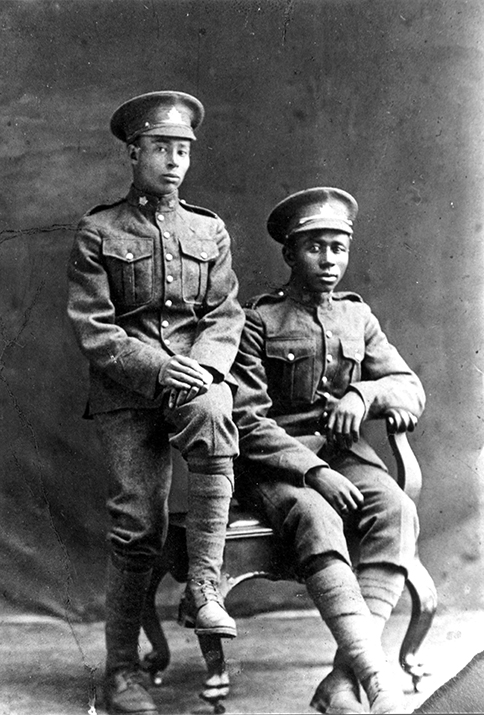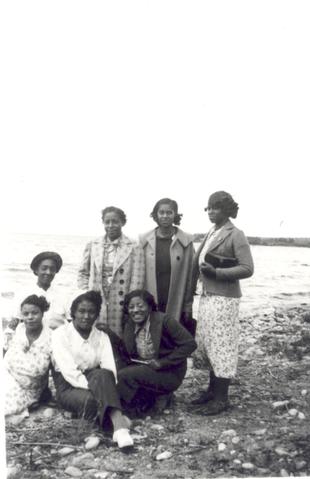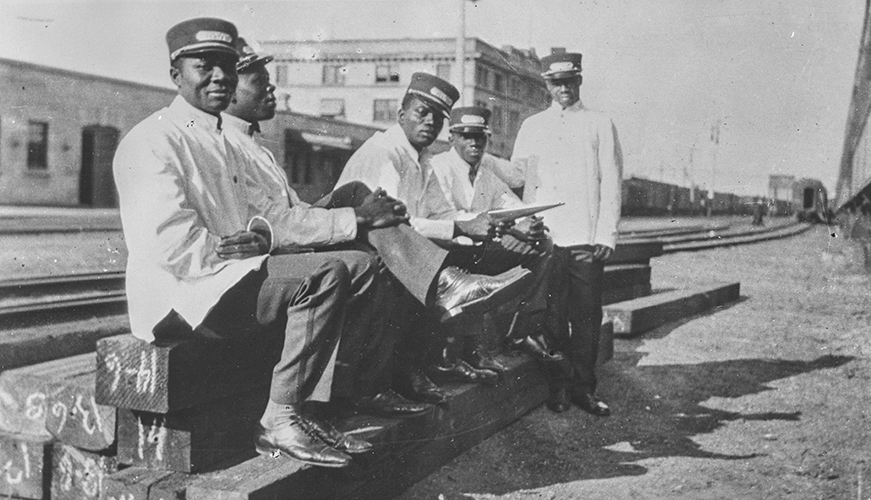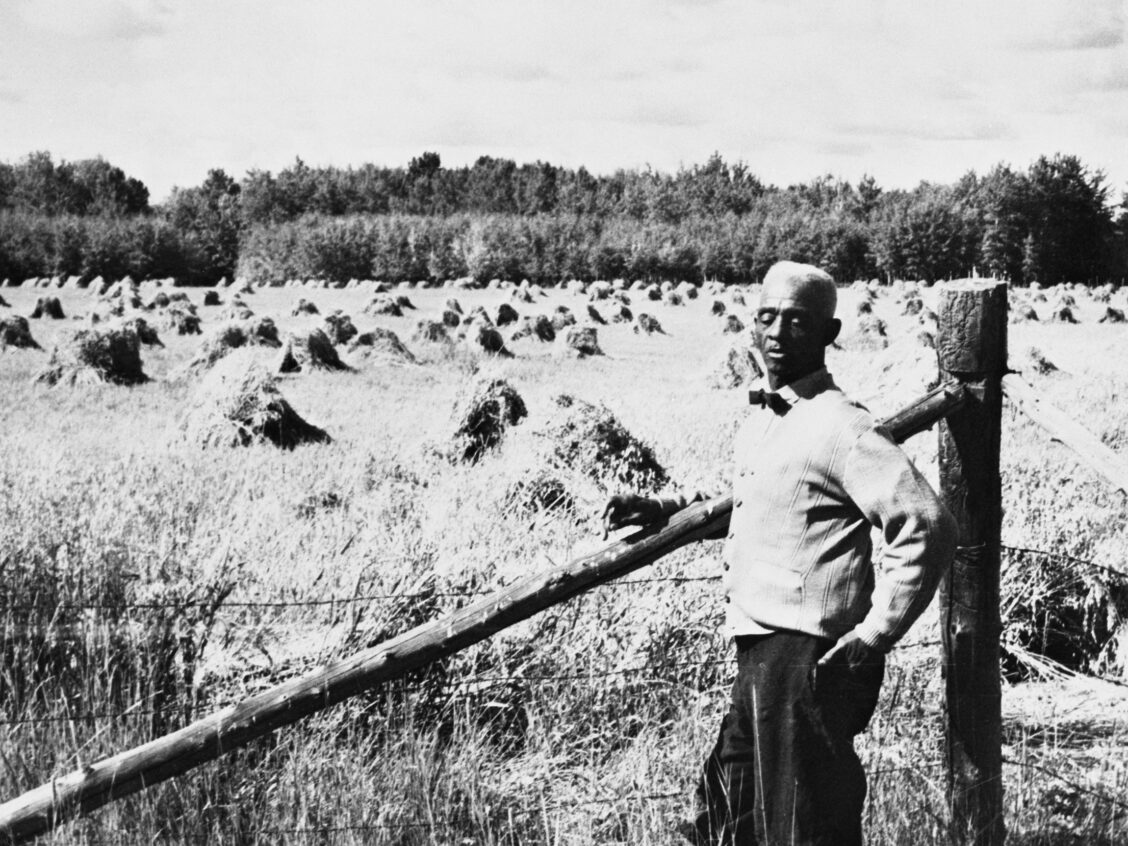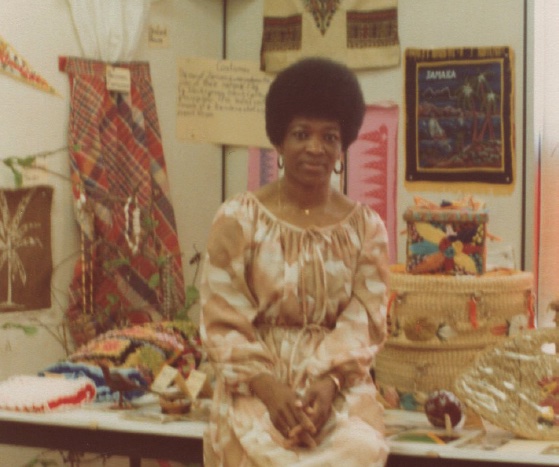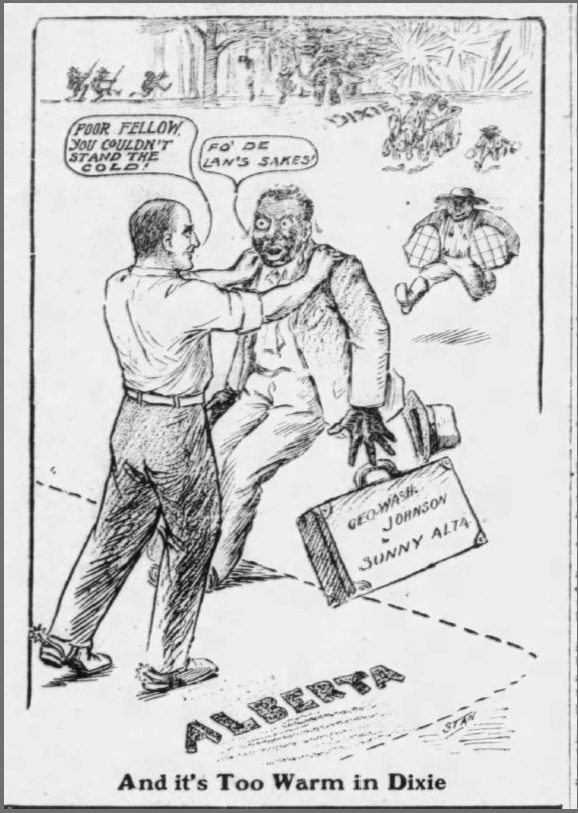
Sustained Opposition to Black Immigration
Newspapers frequently reported negatively on the arrivals of Black immigrants from the United States, including the Edmonton Bulletin, Edmonton Journal, and Calgary Eye Opener. The first group of Black peoples to arrive were noted rather disparagingly by one newspaper, “It was in 1908 that the first party arrived from the cotton fields of Oklahoma and settled along the Grand Trunk Pacific, the largest settlement being at Chip Lake.”

